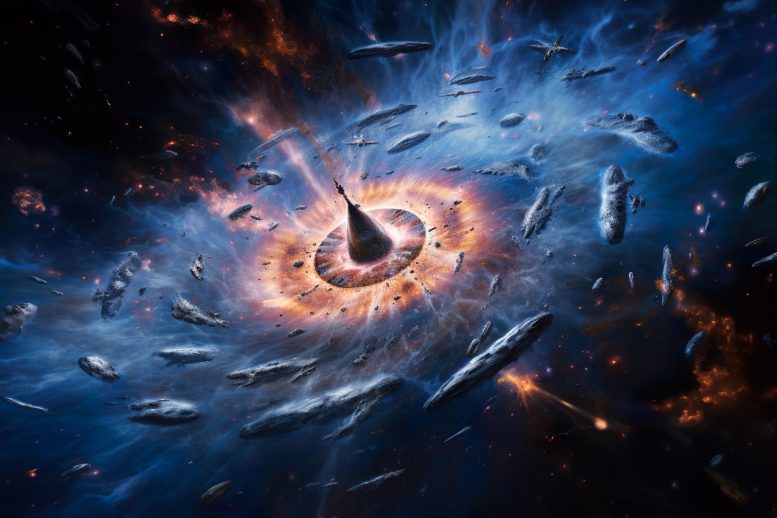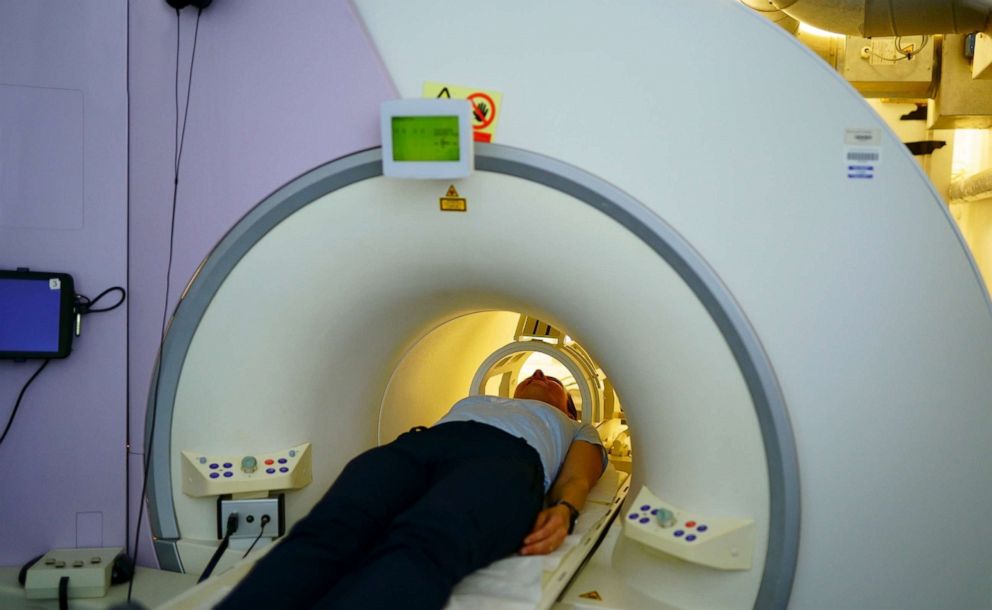
Σε μια πρωτοποριακή μελέτη, οι επιστήμονες χρησιμοποίησαν κβάζαρ ως κοσμικά ρολόγια για να παρατηρήσουν το πρώιμο σύμπαν να ταξιδεύει σε εξαιρετικά αργή κίνηση, επικυρώνοντας τη θεωρία της γενικής σχετικότητας του Αϊνστάιν. Εξετάζοντας δεδομένα από σχεδόν 200 κβάζαρ, υπερμεγέθεις μαύρες τρύπες στα κέντρα των πρώιμων γαλαξιών, η ομάδα διαπίστωσε ότι ο χρόνος φαινόταν να ρέει πέντε φορές πιο αργά όταν το σύμπαν ήταν λίγο πάνω από ένα δισεκατομμύριο ετών.
Παρατηρητικά δεδομένα από σχεδόν 200 κβάζαρ δείχνουν ότι ο Αϊνστάιν είχε δίκιο -για άλλη μια φορά- σχετικά με τη χρονική διαστολή του σύμπαντος.
Οι επιστήμονες παρατήρησαν για πρώτη φορά ότι το σύμπαν λειτουργούσε σε εξαιρετικά αργή κίνηση, ξεκλειδώνοντας ένα από τα μυστήρια του διαστελλόμενου σύμπαντος του Αϊνστάιν.
Η γενική θεωρία της σχετικότητας του Αϊνστάιν σημαίνει ότι θα πρέπει να παρατηρήσουμε το μακρινό -και επομένως το αρχαίο- σύμπαν να λειτουργεί πολύ πιο αργά από ό,τι σήμερα. Ωστόσο, το να κοιτάξουμε πίσω εκείνη την εποχή έχει αποδειχτεί άπιαστο. Οι επιστήμονες μπόρεσαν τώρα να λύσουν αυτό το μυστήριο χρησιμοποιώντας κβάζαρ ως «ρολόγια».
είπε ο επικεφαλής συγγραφέας της μελέτης, ο καθηγητής Geraint Lewis από τη Σχολή Φυσικής του Πανεπιστημίου του Σίδνεϊ και το Ινστιτούτο Αστρονομίας του Σίδνεϊ.
«Αν ήσασταν εκεί έξω, σε αυτό το βρεφικό σύμπαν, ένα δευτερόλεπτο θα φαινόταν σαν ένα δευτερόλεπτο – αλλά από την τοποθεσία μας, περισσότερα από 12 δισεκατομμύρια χρόνια στο μέλλον, αυτός ο πρώιμος χρόνος φαίνεται να καθυστερεί».
Η έρευνα δημοσιεύτηκε στις 3 Ιουλίου στο φυσική αστρονομία.

Ο καθηγητής Geraint Lewis είναι στο Ινστιτούτο Αστρονομίας του Σίδνεϊ στη Σχολή Φυσικής του Πανεπιστημίου του Σίδνεϊ. Πίστωση: Πανεπιστήμιο του Σίδνεϊ
Ο καθηγητής Lewis και ο συν-συγγραφέας του, Dr Brendon Brewer του Πανεπιστημίου του Auckland, χρησιμοποίησαν παρατηρούμενα δεδομένα από σχεδόν 200 κβάζαρ – υπερμεγέθεις μαύρες τρύπες στα κέντρα των πρώιμων γαλαξιών – για να αναλύσουν αυτή τη χρονική διαστολή.
«Χάρη στον Αϊνστάιν, γνωρίζουμε ότι ο χρόνος και ο χώρος συμπλέκονται, και από την αυγή του χρόνου στη μοναδικότητα του Big Bang, το σύμπαν διαστέλλεται», είπε ο καθηγητής Lewis.
«Αυτή η διαστολή του διαστήματος σημαίνει ότι οι παρατηρήσεις μας στο πρώιμο σύμπαν θα πρέπει να φαίνονται πολύ πιο αργές από τις σημερινές ροές του χρόνου.
«Σε αυτό το έγγραφο, το αποδεικνύουμε περίπου ένα δισεκατομμύριο χρόνια αργότερα[{” attribute=””>Big Bang.”
Previously, astronomers have confirmed this slow-motion universe back to about half the age of the universe using supernovae – massive exploding stars – as ‘standard clocks’. But while supernovae are exceedingly bright, they are difficult to observe at the immense distances needed to peer into the early universe.
By observing quasars, this time horizon has been rolled back to just a tenth the age of the universe, confirming that the universe appears to speed up as it ages.
Professor Lewis said: “Where supernovae act like a single flash of light, making them easier to study, quasars are more complex, like an ongoing firework display.
“What we have done is unravel this firework display, showing that quasars, too, can be used as standard markers of time for the early universe.”
Professor Lewis worked with astro-statistician Dr. Brewer to examine details of 190 quasars observed over two decades. Combining the observations taken at different colors (or wavelengths) – green light, red light, and into the infrared – they were able to standardize the ‘ticking’ of each quasar. Through the application of Bayesian analysis, they found the expansion of the universe imprinted on each quasar’s ticking.
“With these exquisite data, we were able to chart the tick of the quasar clocks, revealing the influence of expanding space,” Professor Lewis said.
These results further confirm Einstein’s picture of an expanding universe but contrast earlier studies that had failed to identify the time dilation of distant quasars.
“These earlier studies led people to question whether quasars are truly cosmological objects, or even if the idea of expanding space is correct,” Professor Lewis said.
“With these new data and analysis, however, we’ve been able to find the elusive tick of the quasars and they behave just as Einstein’s relativity predicts,” he said.
Reference: “Detection of the cosmological time dilation of high-redshift quasars” by Geraint F. Lewis and Brendon J. Brewer, 3 July 2023, Nature Astronomy.
DOI: 10.1038/s41550-023-02029-2

“Ερασιτέχνης διοργανωτής. Εξαιρετικά ταπεινός web maven. Ειδικός κοινωνικών μέσων Wannabe. Δημιουργός. Thinker.”



:focal(350x243:351x244)/https://tf-cmsv2-smithsonianmag-media.s3.amazonaws.com/filer_public/09/ff/09ffba76-0fa5-4839-b8dc-bf3bfae45871/low-res_charterhouse_warren_5_tony_audlseyjpg.png)